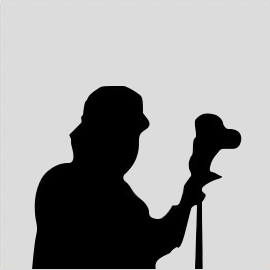1 Like
中和殿:
1、故宫外朝三大殿之一,位于紫禁城太和殿、保和殿之间。是皇帝去太和殿大典之前休息的地方,并接受执事官员的朝拜之处。中和殿始建于明永乐十八年(1420年),明初称“华盖殿”,嘉靖时遭遇火灾,重修后改称“中极殿”。清顺治元年(1644年),清皇室入住紫禁城,第二年改中极殿为中和殿。
2、中和殿平面呈正方形,面阔、进深各为3间,四面出廊,金砖铺地,建筑面积580平方米。屋顶为单檐四角攒尖,屋面覆黄色琉璃瓦,中为铜胎鎏金宝顶。殿四面开门,正面三交六椀槅扇门12扇,东、北、西三面槅扇门各4扇,门前石阶东西各一出,南北各三出,中间为浮雕云龙纹御路,踏跺、垂跺、垂带浅刻卷草纹。门两边为青砖槛墙,上置琐窗。殿内外檐均饰金龙和玺彩画,天花为沥粉贴金正面龙。殿内设地屏宝座。门窗的形制则取自《大戴礼记》所述的明堂,避免了三座大殿的雷同。
3、中和殿内宝座前左右两侧的两只金质四腿独角异兽。它是想象中的一种神兽,传说日行18000里,懂得四方语言,通晓远方之事。放在皇帝宝座两旁,寓意君主圣明,同时为烧檀香之用。放在中和殿地平台两侧的铜熏炉,是用来生炭火取暖的。清代宫中烧用的炭,叫“红箩炭”。这种炭气暖而耐烧,灰白而不爆。宝座两旁还放着两乘肩舆,俗称轿子,是清代皇帝在宫廷内部使用的交通工具。
4、太和、中和与保和三大殿所在的台基上,设置有龙头的头部形状的排水口。下雨时,排水头一起喷水,形成“千龙吐水”的景观。
...





Overview and HistoryIn the Stone Age, "Peking Man" lived near Beijing -- as many as 500,000 years ago. The earliest relics in China are stone tools dating to this time period. Between four and five thousand years ago there were agricultural settlements southwest of Beijing. They were the beginning of a city that would go through several name changes over the millenia.The legendary Yellow Emperor Huang Di battled Chiyou "in the wilderness of the Zhou prefecture." Zhoulu is a town to the west of modern Beijing. The Yellow Emperor's successor, Emperor Yao, established a capital city called Youdo. Youdo became a place called Ji, and Ji was taken over by the Marquis of Yan during the period of the Warring States (475 B.C.)Ji remained an important city for ten centuries. From China's first feudal empire through to the end of the Tang Dynasty, Ji was a strategic military center in the campaign to unite all of China.By the end of the Tang Dynasty in 907 A.D., the Qidan army came from the north and occupied Ji. They called it Nanjing, which meant "southern capital." During this time the Liao Dynasty ruled and carried out many reconstruction projects in the city, fortifying it for greater military use.The Nuzhen army conquered the Liao and established the Jin dynasty as of 1115 A.D., moving the city of Ji and renaming it "Zhongdu" which means "Central Capital." This meant more expansion and construction of palaces until the city spanned five kilometers across and contained an estimated one million people.Mongolian raiders invaded Zhongdu in 1215 A.D. and renamed it Dadu. Under Kublai Khan the Yuan Dynasty took Dadu as its capital and unified China!Since Zhongdu had been destroyed by fire in the change from Jin to Yuan dynasties, Kublai Khan took on a reconstruction project that was to expand the city into rectangular shape. It became the political center of the country with three main areas -- imperial palaces, the city walls, and the canal.By the coming of the thirteenth century, Dadu was a world famous city which astounded Marco Polo when he arrived. In his record he writes, "You must know that it is the greatest palace that ever was..."In 1368 Ming soldiers captured Dadu and renamed it Beiping or "Northern Peace." It went through another period of reconstruction which saw walls twelve meters high built around its perimeter, walls ten meters thick which took fifteen years to build. When they were done, Beiping became the official capital of the Ming Dynasty. With the completion of the palaces and gardens in 1420, Emperor Yongle renamed the city Beijing, "Northern Capital."Beijing grew once more and took on a rectangular shape with two distinct sections, the Inner City (Tartar) and the Outer City (Chinese). Its city planners gave it an organized arrangement that still felt relaxed.The Qing Dynasty came along circa 1644 A.D. and the Manchus built extended suburban gardens. These took more than a whole century to make, but when they were finished the open-air pavilions and palaces stood as a masterpiece of Chinese architecture. This was proper to show the power and refinement of traditional China, a fitting design for the capital of the empire.The Qing Dynasty lasted until 1911 but collapsed into chaos at the hands of the Northern Warlords. Beijing suffered a lack of leadership until 1949, when the People's Liberation Army entered the city. From Tian'anmen Square in the center of the city, Chairman Mao Zedong proclaimed the foundation of the People's Republic of China, with Beijing as its capital.Since then it has continued to expand, surpassing the nine gates of the inner city wall, beyond the seven outer gates, and into the suburbs. Beijing now takes up 750 square kilometers! The city retains its old symmetry with a central axis that runs north-south, and the Imperial Palace Museum at the center. This palace was once called the "Forbidden City" but it is now a museum open to the public.Getting ThereThe Beijing Capital International Airport is located 25km northeast of the city. It is the center of China's civil aviation network and it connects to 69 cities worldwide. The airport is linked to the city by bus, taxi and Beijing Subway Airport Line.The city government operates one bus line and private buses go and come from several hotels. The taxi stand is outside the terminal, as always, so don't ride with the drivers who harass you inside the terminal. A ride to the city center should cost about 70 RMB plus 15 RMB highway toll. You should also know that there's an airport tax of 90 RMB for international travelers. Keep your receipt!TransportationWithin the city you can choose from 67,000 GPS-equipped taxis, the bus or the metro. Half of their buses are running on natural gas now, which is a good move considering the city is adding fifty new bus routes per year. Whoa!The metro has two routes, the Loop Line and Line One. The Loop has sixteen stations and it runs parallel to where the city wall stood in the Ming era. Line One has twenty-one stops going from the suburbs on one side all the way across to the other side. It is safe to assume that there will be more metro lines to follow as Beijing grows.People and CultureOne of the unique sights in Beijing is a park filled with retired people doing their exercises early in the morning. Tai ch'i, QiGong, sword dancing and shadow boxing are forms of exercise and relaxation which have existed for more than two thousand years and are still popular today.Drinking tea in a teahouse and enjoying a folk opera in an old-style theater are both popular activities in Beijing culture. Beijing has more bars and pubs than any other Chinese city (more than 400), and it's also full of antique shops, silk markets and museums.Things to do, RecommendationsBeijing is massive and filled with interesting things to explore. For just a few examples, take a look at these:The National Stadium (bird's nest), the Water Cube, and ruins of the Yuan Dynasty city wall.If you like art, you have to check out the 798 Art District. It's named for Factory #798 and the district contains hundreds of galleries, bookstores and restaurants. Have fun!Text by Steve Smith.